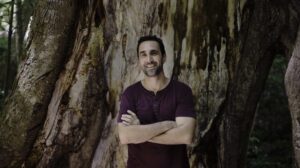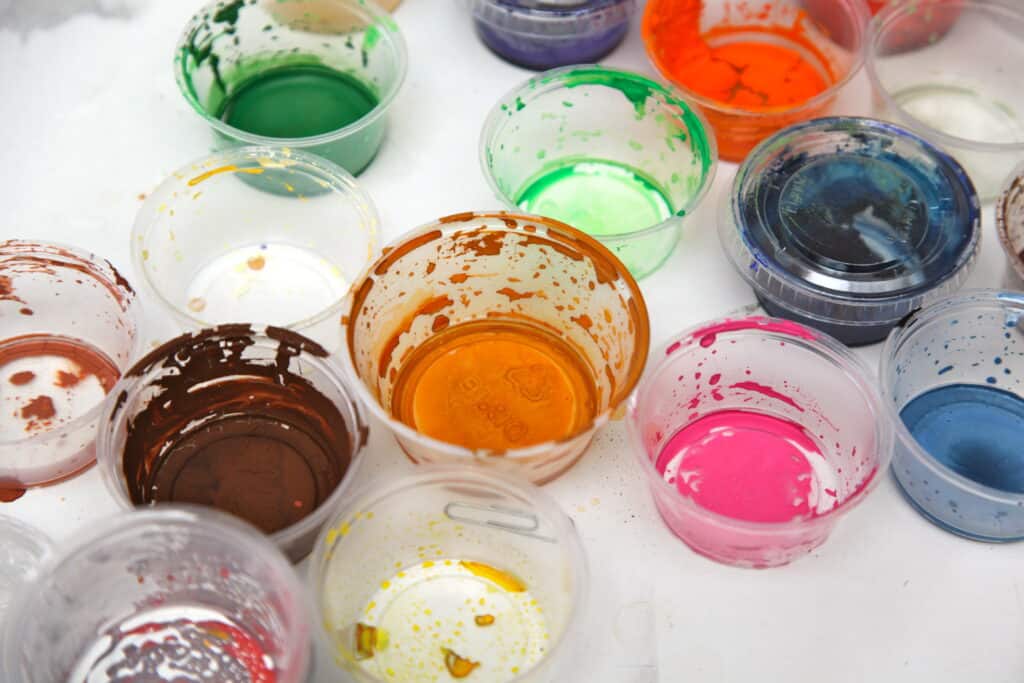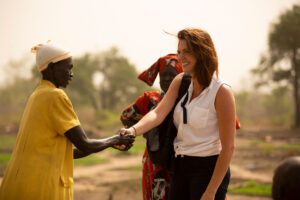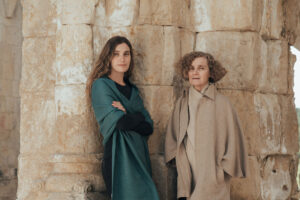
Masaya Co — Sustainable Furniture from Seed to Seat
MasayaCo is a sustainable furniture company on a mission to combat climate change through reforestation & sustainable design.
USA
Mood of Living November 24, 2015
Longtime friends Ryland Arnoldi and Sam Seidman attended Pomona College in Claremont, California, and both planned to go into finance. However, during a nine-month backpacking trip overseas, Arnoldi and Seidman decided to take a completely different route. This new path led them to create Wrapped, a technology-driven artwork company initially founded to create artistic and acrylic wrapping paper, now expanding in the production of custom-designed products.
Having a painter as a father, Arnoldi grew up surrounded by art and creativity. His father wrapped gifts in scrap butcher paper left over on his painting tables. Arnoldi recalls that people really seemed to gravitate towards the vibrant, acrylic paint-splattered paper. Little did they know, years later, that scrap paper would inspire Arnoldi and Seidman to embark on a journey. While Wrapped started out as just a wrapping paper company, they have now ventured into notebooks, placemats and even surfboards. Their designs have expanded into animal prints, nature, and everyday objects one wouldn’t expect to see on an otherwise ordinary gift bag.
Mood of Living: Where are both of you from?
Ryland Arnoldi: Venice, Calif.
Sam Seidman: Grand Junction, Colo.
MoL: Where did you go to school?
R.A: Crossroads K -12, then Pomona College.
S.S: Cate School, then Pomona College.
MoL: Where are you currently located?
R.A: Los Angeles, Calif.
MoL: Can you describe your occupation?
R.A: We’re a small company, so everyone wears many hats. I tend to focus more on the creative end, coming up with new artwork and figuring out which patterns work for which projects. Sam handles more of the business side of things.

An artist at work for Wrapped.
MoL: Before your current occupation you were…?
R.A: We were both going into finance, but opted out during a nine-month backpacking trip overseas.
MoL: What inspired you to start a wrapping paper design company?
R.A: I grew up in my father’s painting studio, and he used to wrap gifts in butcher paper he pulled off his painting tables. There was something so odd about these three-dimensional forms covered in heavy coats of acrylic paint, that people really seemed to gravitate towards them. Originally, when we started Wrapped, we were trying to imitate this incredibly tactile aesthetic by hand crafting these patterns and trying to reproduce them on a mass scale. We wanted to make something truly unique and different at an affordable price, and wrapping paper seemed like a great way to start.
MoL: Where do you see Wrapped 10 years from now?
R.A: We’ve been using the techniques we developed from paper manufacturing and our growing knowledge of image capturing to develop a pretty unique way of creating artwork. Today, Wrapped actually makes more Art (digitally printed canvas, giclées, and prints on aluminum) than we do paper. As we grow, we keep finding new ways to generate images and apply them to different substrates; essentially, wrapping just about everything in site. From giant, printed canvases to bicycles and surfboards, our goal is really to master this new analog digital/hybrid process and see just how far we can take it.
MoL: Where did you learn your craft?
R.A: I am incredibly fortunate to have a father who is multi-talented and has a complete mastery over many mediums. Many of the skills we use to create our artwork come directly from him. The wonderful thing about Wrapped is that we’re constantly experimenting and evolving, and so each member of our team brings something to the table and teaches the rest of us. This collaborative learning environment is one of my favorite things about the company we’ve built.
MoL: Describe the process of making a roll of wrapping paper.
R.A: We’ll come up with a concept, or aesthetic, we think is interesting. If it’s two dimensional, like a painting or a gouache, we’ll generate a large series of drawings, paintings, etc. in that vein and then scan them into the computer. If it’s a three-dimensional object (or something too massive to fit in the scanner) we’ll photograph the item. We then make a large series of test prints, playing with the image distorting scale and pallet, until we have something we’re happy with. This design goes out to be printed on a large lithograph press with one of us on site to check the color against the original we made in our studio. The printed sheets are then shipped to our warehouse, where they’re assembled by rolling the individual sheets onto a core and sealing them with shrink wrap. Finally, the roll is labeled and placed into inventory where it’s kept until we receive and order for that product.

MoL: How do you ensure your products are made at the highest quality?
R.A: We have a number of different manufacturers we work with and its been a slow and painful process finding the right ones. After a lot of trial and error and an education in printing and manufacturing, we’ve gotten better at finding the right manufacturer with the right equipment to produce goods we can truly be proud of. We also manufacture locally so one of us can go and stand on the presses to compare the final product with the original we made in our studio.
MoL: Where do you look for inspiration?
R.A: We’re constantly inspired by the process of making artwork. We generate a ton of ideas, but until we actually try to execute one of them, we’re completely unaware of all the challenges and unexpected elements that occur along the way. During our creative process, whether it be painting or photography, new ideas and challenges present themselves and they’re a constant source of inspiration, so it’s a self-perpetuating process. Similarly, once you start a series and you become good at producing that kind of work, millions of iterations present themselves and it’s a question of when and where to stop. As soon as you start making artwork of any kind, the options become limitless and it becomes a challenge of picking the ones that you can really execute well.
MoL: Some of your designs include animal prints, wood, and other real-life images. Do you take these pictures yourself?
R.A: Yes, we generate everything in-house. The animal print was one of the first series we did, and we actually went to a taxidermy shop in Los Angeles to rent the animal hides for the day.
MoL: What does a typical day look like at the studio/workspace?
R.A: Every day is different, but most our time at this point is spent generating artwork for projects that are currently underway. This consists of both creating new source material by hand, and working in the computer to create the final product.
Wrapped creates designs not only on wrapping paper, but also on canvases, bicycles and surfboards.
MoL: Does it ever become difficult working together as best friends and along-side your father?
R.A: Yes, it can get very complicated. It makes Wrapped an all consuming endeavor, but I wouldn’t have it any other way. When you start a small business your personal life and work life blend anyway. I’m incredibly fortunate to be able to take this on surrounded by people I love and respect.
MoL: Do you have a hobby?
R.A: Yes, I grew up surfing and its been a life long passion of mine. The ocean has a way of humbling you and forcing you to stay in the moment.
MoL: What is the best advice you’ve ever received?
R.A: “It’s not what you do, it’s how you do it.” – Chuck Arnoldi (my father).
Artwork at the Wrapped studio.
MoL: If you could have a conversation with any living person, who would it be and why?
R.A: I’d love to speak with Damien Hirst. I’m fascinated with his process and am so jealous that he literally has every tool imaginable at his disposal. I’d love to know how you pick a direction when your options are limitless, and you’re able to execute any idea flawlessly.
MoL: What is something you know now that you wish you knew before?
R.A: I wish I’d known that our business would evolve into something almost unrecognizable from our initial conception. That many of our choices and mistakes wouldn’t show their full effect for months, or even years after they were made, and that each one of them ultimately moved us forward as long as we were able to learn from them.
MoL: What advice can you give anyone interested in starting his or her own business?
R.A: You are going to make mistakes. Sam and I use to joke that every day the world fell apart and it was our job to put it back together. The best advice I could give is that you need to learn to roll with the punches, and not let every issue send you into a tailspin. Growing a business is a marathon, not a sprint, and if you beat yourself you make the journey far harder than it has to be.
Photography courtesy of Stephanie Morris and Wrapped

MasayaCo is a sustainable furniture company on a mission to combat climate change through reforestation & sustainable design.

Founder Treana Peake, supports artisan partnerships and funds development work through the Obakki Foundation.

ÁBBATTE creates handmade textiles in Spain on the grounds of a 13th -century Cistercian monastery in the town of Segovia.